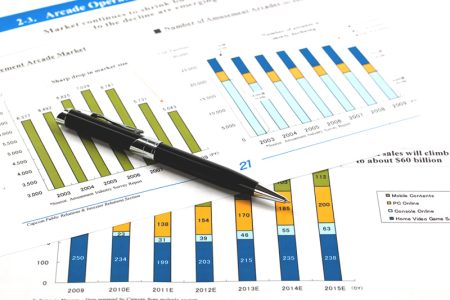By David Randall
NEW YORK (Reuters) -Inflation data showing U.S. consumer prices rising less than expected in March may have come as a relief to markets, but some investors believe it may take a strong corporate earnings season to push stocks higher decisively.
Hopeful investors have been betting on easing inflation and a dovish pivot from the Federal Reserve in recent weeks, helping the stay buoyant despite recent tumult in the banking sector and worries over a possible recession in 2023. The index is up some 6.5% year-to-date.
Wednesday’s data showed consumer prices growing at a slower pace than expected last month, bolstering the argument that inflation is decelerating. Yet some investors believe markets may have already accounted for a mild inflation slowdown and say further gains in stocks could depend on whether upcoming corporate earnings – especially results from banks – can beat forecasts.
“We will have a lot of clarity over the next seven days when you have most major banks reporting,” said Jake Schurmeier, a portfolio manager at Harbor Capital Advisors. “If the banks are proving that they are growing and lending and have confidence in the credit outlook, that will be a much stronger sign that the Fed may be able to achieve a soft landing.”
The Labor Department data showed headline inflation rising 5% on a year-over-year basis in March, against economists’ estimates of a 5.2% rise. The core measure, which strips out volatile food and energy prices, climbed 5.6%, in line with consensus estimates.
The S&P 500 initially rallied on the news but was down about 0.4% in late-session trading. The index stood at around 4,100, a level near which several rallies have crumbled over the last several months with recession worries and fears of a more hawkish Fed alternately fueling investor anxiety.
“From an equity market standpoint, (the data ) is in line and already priced by the market, so we do not see this as a catalyst for valuations to expand much further,” wrote Matt Peron, director of research at Janus Henderson Investors, in a Wednesday note.
FOCUS ON EARNINGS
The upcoming earnings season kicks off on April 14 with results from big Wall Street banks including JPMorgan Chase (NYSE:), Citigroup Inc (NYSE:) and Wells Fargo (NYSE:), which investors will scrutinize to gauge the effects of last month’s banking crisis. Tesla (NASDAQ:) Inc, IBM (NYSE:) and Johnson & Johnson (NYSE:) are among the big companies reporting the following week.
“It feels like stocks are trading a little too much on interest rates,” said Craig Bergstrom, chief investment officer at hedge fund Corbin Capital Partners. While the trajectory of rates will continue to matter, “business prospects for companies are going to be more important in the long term.”
Earnings per share for the six largest U.S. banks are expected to fall 10% from the same quarter last year, according to Refinitv data.
Overall, analysts expect S&P 500 earnings to fall 5.2% in the first quarter of 2023 from the year-ago period, I/B/E/S data from Refinitiv as of April 7 showed.
That weakness would come on the heels of a 3.2% earnings fall in the fourth quarter of 2022, a back-to-back decline known as an earnings recession which has not occurred since COVID-19 blasted corporate results in 2020.
POTENTIAL VOLATILITY
At the same time, Wednesday’s comparatively benign inflation number may offer little insight on whether Wall Street has correctly pegged the Fed’s near-term monetary policy trajectory. While the central bank has said rates will likely stay around current levels of 4.75% to 5% until year end, futures markets show investors betting on a more dovish path, with rate cuts starting this summer.
Markets were recently pricing in a 72% chance that the Fed raises benchmark rates by 25 basis points at its May policy meeting, up from roughly 45% a week ago, while pricing in a more than 50% chance that rates will fall below 4.5% by the end of the year, according to CME’s FedWatch Tool.
Fed staff assessing the potential fallout of banking sector stress projected a “mild recession” starting later this year, according to minutes from the central bank’s latest policy meeting released Wednesday afternoon.
“The market is certain that there is something around 100 bps of rate cuts and the Fed has so far said ‘I don’t think so,’” said Steve Chiavarone, senior portfolio manager at Federated Hermes (NYSE:). “In that disconnect is the potential for volatility.”
Read the full article here













